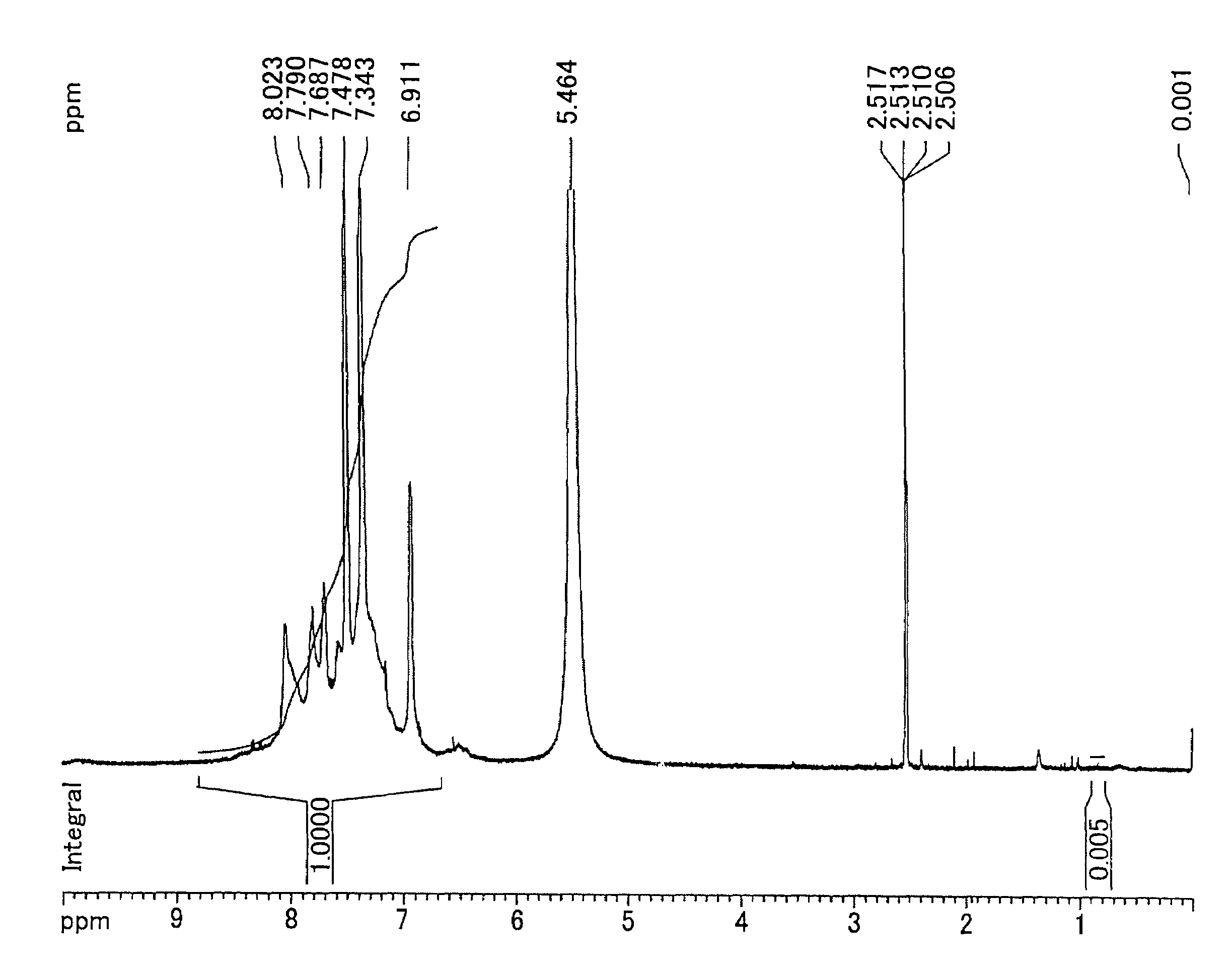Membrane-electrode assembly for solid polymer electrolyte fuel cell
a solid polymer electrolyte and fuel cell technology, applied in the direction of non-metal conductors, conductors, electrochemical generators, etc., can solve the problems of reducing the power output of the fuel cell or power generation shutdown, the power generation output limit, and the proton conductivity or embrittlement of the membrane, so as to improve the power generation output and improve the stability. , the effect of excellent hot water resistan
- Summary
- Abstract
- Description
- Claims
- Application Information
AI Technical Summary
Benefits of technology
Problems solved by technology
Method used
Image
Examples
synthesis example 1
Synthesis of 2,5-dichloro-4′-(1-imidazolyl)benzophenone
[0170]
[0171]150.7 g (0.560 mol) of 2,5-dichloro-4′-fluorobenzophenon, 114.4 g (1.68 mol) of imidazole, 100.6 g (0.728 mol) of potassium carbonate, and 840 ml of N,N′-dimethylacetamide were added into a 2 L three-necked flask equipped with a stirrer, thermometer, cooling pipe, and nitrogen inlet tube. The reaction solution was heated by use of an oil bath and was allowed to react at 110 degrees C. in a nitrogen atmosphere for 2 hours. After the disappearance of material was confirmed by a thin layer chromatography, the mixture was cooled to ambient temperature. Then, the reaction solution was gradually poured into 3 L of water to cause coagulation. The product obtained by filtration was dissolved into 1.2 L of THF, 4 L of toluene was added, and then washed by brine until the water layer becomes neutral. After the organic layer was dried by magnesium sulfate, the solvent was removed by an evaporator. The rough yield was 180 g.
[017...
synthesis example 2
Synthesis of 2,5-dichloro-4′-(1-pyrrolyl)benzophenone
[0173]
[0174]134.6 g (0.500 mol) of 2,5-dichloro-4′-fluorobenzophenon, 50.3 g (0.750 mol) of pyrrole, 76.0 g (0.550 mol) of potassium carbonate, and 840 ml of N,N′-dimethylacetamide were added into a 2 L three-necked flask equipped with a stirrer, thermometer, cooling pipe, and nitrogen inlet tube. The reaction solution was heated by use of an oil bath and was allowed to react at 100 degrees C. in a nitrogen atmosphere for 3 hours. After the disappearance of material was confirmed by a thin layer chromatography, the mixture was cooled to ambient temperature. Then, the reaction solution was gradually poured into 3 L of water to cause coagulation. The product obtained by filtration was dissolved into 2.5 L of toluene was added, and then, by using a separating funnel washed by brine until the water layer becomes neutral. After the organic layer was dried by magnesium sulfate, the solvent was removed by an evaporator. The rough yield w...
synthesis example 3
Synthesis of 2,5-dichloro-4′-(2-benzothiazolethioxy)benzophenone
[0175]
[0176]269.1 g (1.000 mol) of 2,5-dichloro-4′-fluorobenzophenon, 175.6 g (1.050 mol) of 2-benzothiazolethiol, 152.0 g (1.100 mol) of potassium carbonate, and 1.500 ml of N,N′-dimethylacetamide were added into a 3 L three-necked flask equipped with a stirrer, thermometer, cooling pipe, and nitrogen inlet tube, and dehydrated. The reaction solution was heated by use of an oil bath and was allowed to react at 110 degrees C. in a nitrogen atmosphere for 2 hours. After the disappearance of material was confirmed by a thin layer chromatography, the mixture was cooled to ambient temperature. Then, the reaction solution was gradually poured into 3 L of water to cause coagulation. The resulting product by filtration was dissolved into 4 L of toluene. The organic layer was washed by brine to be neutral. After the organic layer was dried by magnesium sulfate, the solvent was removed by an evaporator. The rough yield was 350.3...
PUM
| Property | Measurement | Unit |
|---|---|---|
| mol % | aaaaa | aaaaa |
| mol % | aaaaa | aaaaa |
| mol % | aaaaa | aaaaa |
Abstract
Description
Claims
Application Information
 Login to view more
Login to view more - R&D Engineer
- R&D Manager
- IP Professional
- Industry Leading Data Capabilities
- Powerful AI technology
- Patent DNA Extraction
Browse by: Latest US Patents, China's latest patents, Technical Efficacy Thesaurus, Application Domain, Technology Topic.
© 2024 PatSnap. All rights reserved.Legal|Privacy policy|Modern Slavery Act Transparency Statement|Sitemap



